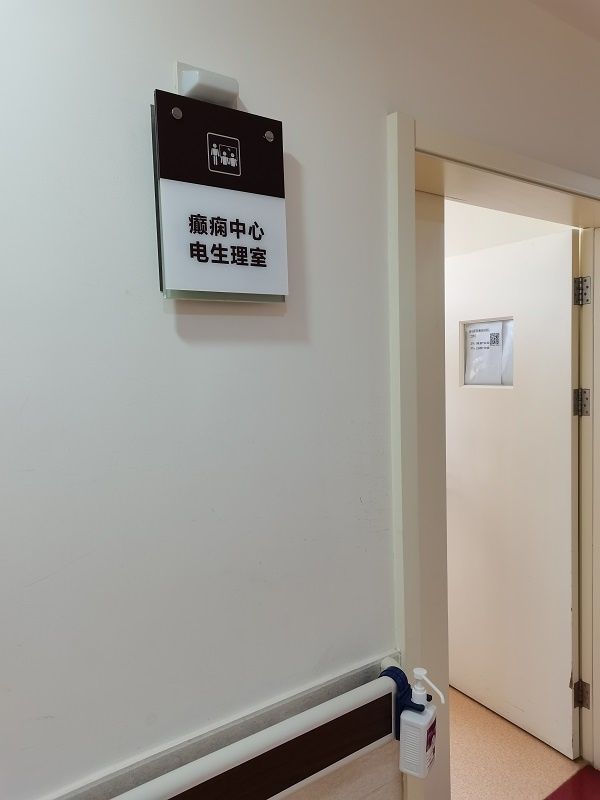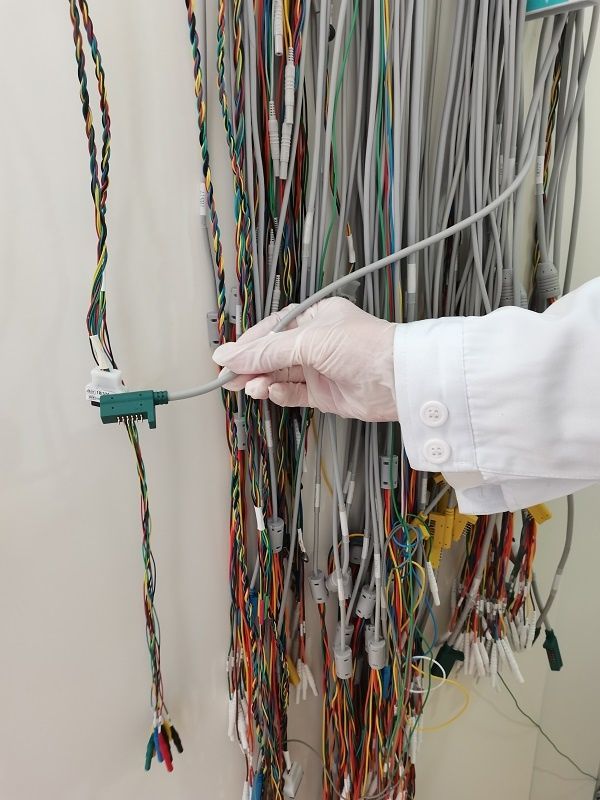
Photo provided by the hospital (the same below)
Hundreds of seizures a day, even more than a dozen times without warning Falling down, returning to normal after a few seconds or minutes, often bruising myself… Such a painful experience happened to 41-year-old Mr. Cheng. He is from Changzhou, Jiangsu. He suffered from epilepsy due to an accident at the age of 15. He underwent two epilepsy foci excision operations and insisted on taking various anti-epileptic drugs, but the effect was minimal. Admiredly came to Shanghai Ruijin Hospital Epilepsy Comprehensive Treatment Center, the doctors found that Mr. Cheng was no longer able to perform the same operation. Therefore, Mr. Cheng accepted the detailed evaluation of Professor Xu Jiwen’s team for nearly two weeks, and under the escort of the professional diagnosis and treatment team, he performed the brain pacemaker installation operation. In the past six months, Mr. Cheng has not had epileptic seizures again, and the family is finally no longer frightened.
Epilepsy is a disease that many people are familiar with. There are about 50 million epilepsy patients in the world, and nearly 1/5 of them are in China. Epilepsy has become the second largest neurological disease in my country after cerebrovascular disease. Common diseases. With the standardization of treatment, although 70% to 80% of patients can control the disease, there is such a group – patients with drug-resistant epilepsy, who not only suffer from the disease, but also face the dilemma of limited treatment methods. Their families have brought great pain. Some patients even wear helmets when they go out, for fear that they will suddenly fall to the ground and lose consciousness and cause an accident. However, the application of “brain-computer interface” has given a better solution to this dilemma.
Xu Jiwen, director of the Epilepsy Comprehensive Treatment Center, introduced that deep brain stimulation (DBS), commonly known as “brain pacemaker”, is also a broad brain-computer interface. The tiny electrodes implanted in the brain emit electrical pulses to stimulate the inner core of the brain to control the symptoms of the patient. Different nuclei can treat different types of epilepsy. It is a landmark technology in the field of neuromodulation therapy and has been in clinical use for more than three decades.

In past clinical applications, brain pacemaker technology is mainly used for Parkinson’s disease, essential tremor, etc. Treatment in the field of motor dysfunction, and has achieved good results. A Parkinson’s patient from Hangzhou told reporters that he was the beneficiary of brain pacemaker implantation. Above his left chest, the reporter could feel a hard “battery,” or stimulator. However, in appearance, this patient is no different from a normal person. He said that the pacemaker device had little effect on his life, but it significantly improved his symptoms.
As a functional brain disease, epilepsy is caused by abnormal discharge of the brain. Therefore, scientists have tried to use weak electrical pulses to stimulate brain-related targets, thereby affecting the corresponding neural circuits, and found that epilepsy can be well controlled. symptom onset. Xu Jiwen said that the clinical application at home and abroad has found that brain pacemaker surgery can effectively alleviate epilepsy seizures, and at the same time effectively alleviate the complications caused by drugs, thereby significantly improving the quality of life of patients with drug-resistant epilepsy. They also observed in the clinic that microcurrent stimulation of certain parts can significantly improve the abnormal discharge of epilepsy. With its minimally invasive, reversible and adjustable advantages, this therapy is becoming a new hope for patients with drug-resistant epilepsy. However, Xu Jiwen also mentioned that after the implantation of the brain pacemaker, some patients no longer have seizures, but there are still differences in individual conditions, and the vast majority of patients have improved to varying degrees.
On May 7, 2021, Shanghai’s first epilepsy center in a public hospital, Ruijin Hospital Affiliated to Shanghai Jiaotong University School of Medicine, was established, which is currently one of the largest epilepsy surgery centers in the country. . Lu Yong, president of Ruijin Hospital Luwan Branch, where the Epilepsy Comprehensive Treatment Center of Ruijin Hospital is located, said that since its establishment in 2018, the Encephalopathy Center of Ruijin Hospital has been focusing on the comprehensive application of brain health and innovative technologies in difficult brain diseases. Functional diseases such as intractable epilepsy are one of the target diseases of functional neurosurgery technology. Brain pacemaker technology relies on the discovery of new targets and precise implantation, and Ruijin Epilepsy Center has accumulated rich experience in this regard. In the near future, advanced technologies such as innovative electrodes and spinal cord stimulation will also gradually enter the clinic, and Ruijin Encephalopathy Center will surely benefit more patients.
Xinmin Evening News reporter Zuo Yan